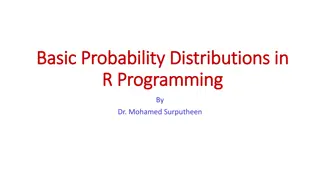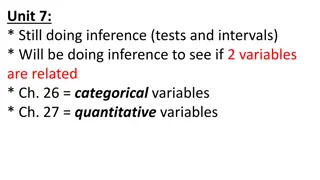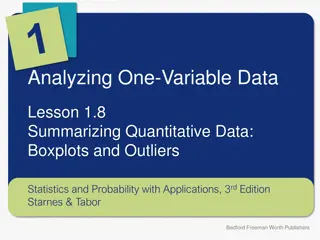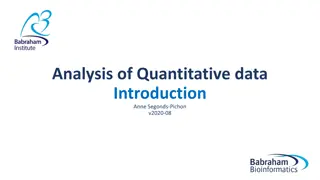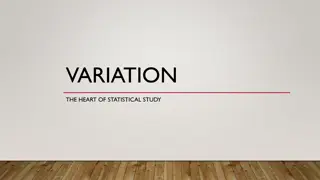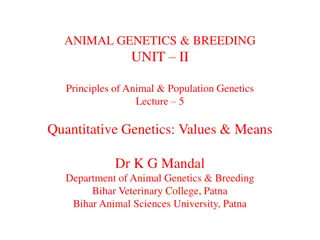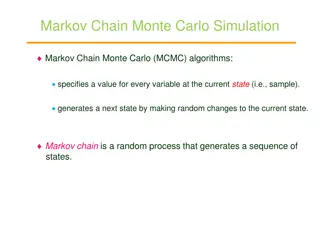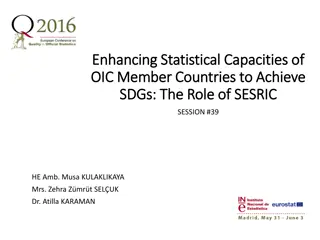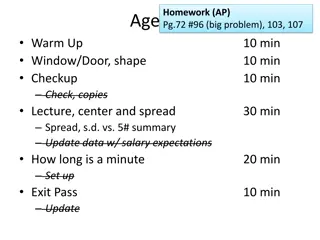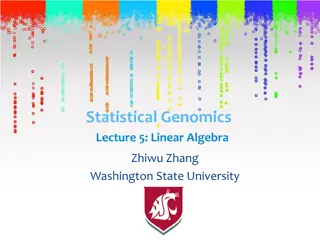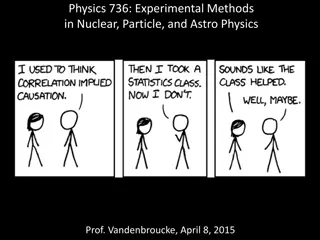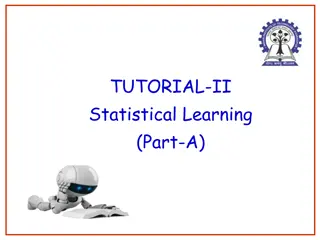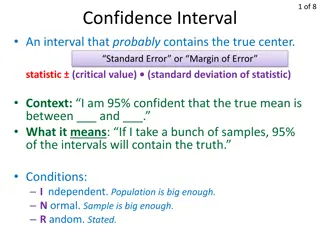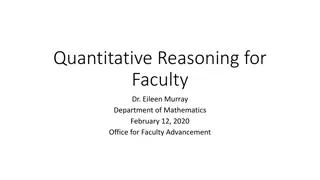Quantitative Distributions and Statistical Measures
How to describe quantitative distributions using visual aids and statistical measures such as shape, outliers, center, spread, and examples involving Grandfather Clock prices and Housefly Wing Lengths.
Download Presentation

Please find below an Image/Link to download the presentation.
The content on the website is provided AS IS for your information and personal use only. It may not be sold, licensed, or shared on other websites without obtaining consent from the author.If you encounter any issues during the download, it is possible that the publisher has removed the file from their server.
You are allowed to download the files provided on this website for personal or commercial use, subject to the condition that they are used lawfully. All files are the property of their respective owners.
The content on the website is provided AS IS for your information and personal use only. It may not be sold, licensed, or shared on other websites without obtaining consent from the author.
E N D
Presentation Transcript
DESCRIBING QUANTITATIVE DISTRIBUTIONS BY: STUDENT X
SHAPE Symmetric Skewed Right: has a long tail on the right side of the data http://images.slideplayer.com/24/6205849/slides/slide_36.jpg Left: has a long tail on the left side of the data Catch a tiger by the tail https://image.slidesharecdn.com/symmetryskewppt-130903152132-/95/symmetry-and-skew-14-638.jpg?cb=1378221735
OUTLIERS Data that doesn t seem to fit in How to find them? Find: Q1 1.5(IQR) anything less than that is an outlier and anymore more than Q3 + 1.5(IQR) is an outlier https://taps-graph-review.wikispaces.com/file/view/outlier_box_plot.gif/73782697/outlier_box_plot.gif
CENTER Mean (average) used when data is symmetric Affected by extreme values Median (middle) used any other time Resistant, not affected by extreme values http://researchhubs.com/uploads/skewness-vs-measures-of-center.png
SPREAD Range of the data Interquartile range (IQR) Used when distribution is skewed Resistant http://sphweb.bumc.bu.edu/otlt/mph-modules/bs/bs704_summarizingdata/Interquartile-Even.png Standard Deviation Average distance of observation to their mean Used when distributions are mostly symmetric Not resistant http://d2r5da613aq50s.cloudfront.net/wp-content/uploads/437066.image2.jpg
SOCS S- Shape O- Outliers C- Center S- Spread
EXAMPLE 1 Price of Grandfather Clocks
EXAMPLE 1 Shape? Skewed to the right. Outliers? IQR = 536.25, IQR*1.5 = 804.375 add to Q3, subtract from Q1. 2386.625 > 2131, 244.625 < 729. There are no outliers. Center? The median price of grandfather clocks is $1257.50 Spread? According to the range the spread of the data is $1402 but according to the IQR the spread is only $536.25
EXAMPLE 2 Housefly Wing Lengths (mm)
EXAMPLE 2 Shape? Symmetric. Outliers? No outliers. Center? The mean length of housefly wings are 45.5mm. Spread? The range of this data is 19 and the standard deviation is 3.72.
EXAMPLE 3 Number of Siblings
EXAMPLE 3 Shape? Data is skewed to the right. Outliers? There is an outlier at 8. Center? The median number of siblings is 2. Spread? The range of the data is 8 and the IQR is 1.75.
CONCLUSION How to describe a basic quantitative distribution When to use mean vs median for the center and standard deviation vs IQR for the spread Don t forget your SOCS https://pbs.twimg.com/media/CqUk3EpUEAAELGi.jpg


